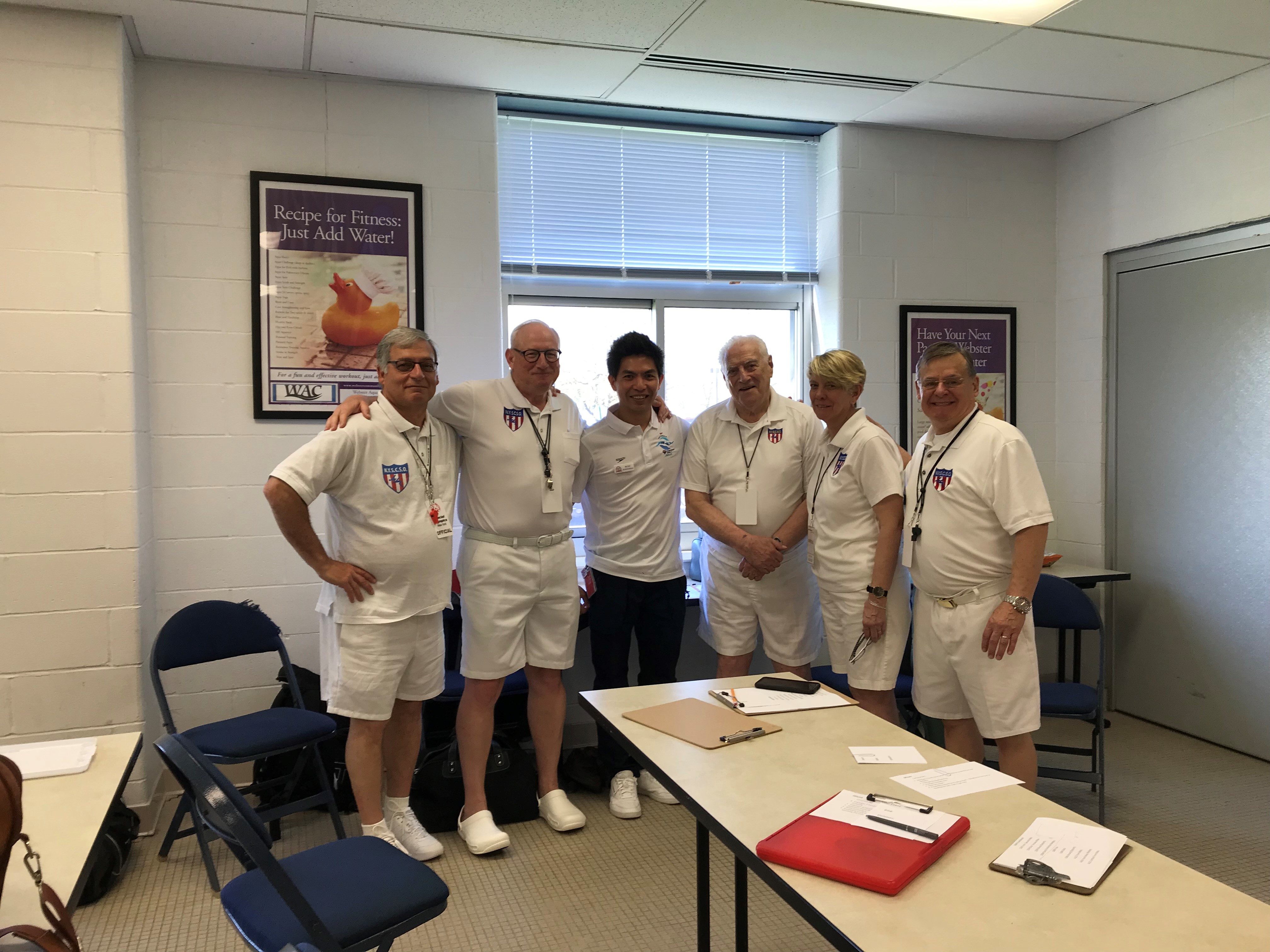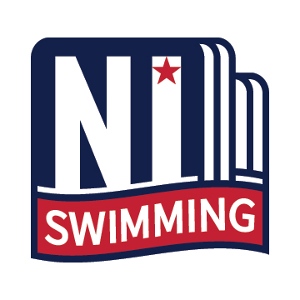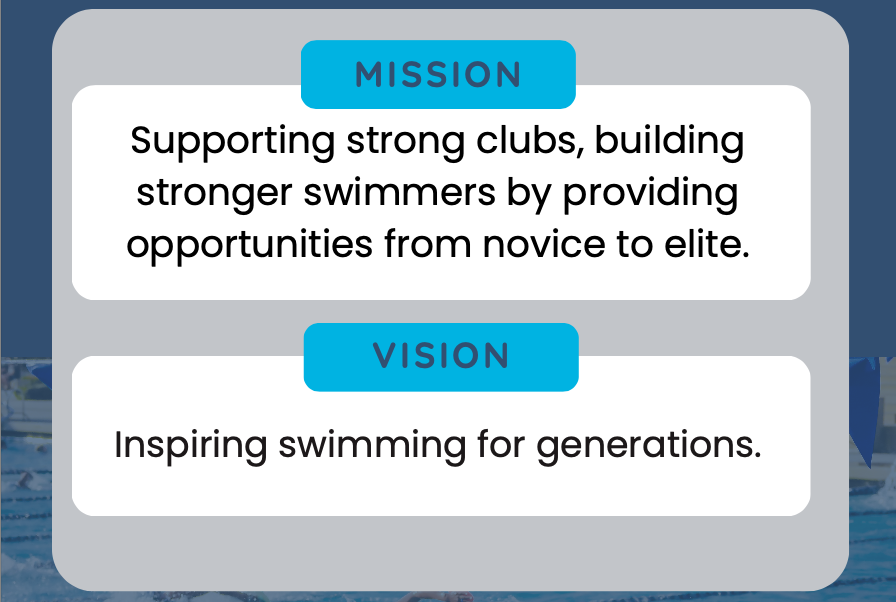The disability committees' goal is to foster and promote the inclusion of athletes with a disability within Niagara Swimming, LSC.
Anyone interested in being on the committee or has any questions, please email [email protected]
Athlete Travel Support - Adpated Form
Athlete Protection Training for Adult Athletes with Cognitive Disabilities
USA Swimming recognizes that the required training course may not be appropriate for some adult athlete members with cognitive disabilities. For any such adult athlete member, USA Swimming recommends the following:
If the Athlete Protection Training Course is appropriate for the adult athlete’s cognitive level, the adult athlete should complete the Athlete Protection Training course with a parent or legal guardian(s).
In the event the Athlete Protection Training course is not appropriate for the adult athlete’s cognitive level, the adult athlete should complete the most developmentally age-appropriate training offered by the U.S. Center for SafeSport (athletesafety.org/training/index). Once the age-appropriate training is completed, the completion certification shall be sent to [email protected]. USA Swimming will update the athlete’s member record to reflect that the training requirement is complete.
In the event that none of the available trainings are cognitively appropriate for the adult athlete, the athlete’s parent or legal guardian shall send an email explaining the circumstance to [email protected].
USA Para Swimming Coach Certification Course
Level 1 curriculum is a foundational level of para specific governance and knowledge for candidates to fulfill a minimum level of para-swimming education. Level 1 Coach certification parallels to the swimmer PSDM (Para Swimming Development Model) level of Foundations 1 & 2. The course takes about 3 hours to complete and is divided into six (6) parts.
Level 1 Offered Virtually
Level 2 & 3 Offered In Person
Level 4 coming soon
USA Para Swimming Clinics and Competitions
Competitions can be found here
Disability Parallel Time Standards
These time standards are intended to foster and promote the inclusion of athletes with a disaility within USA Swimming LSC Championships.
The Standards are divided into three "P" groups. The groups are to place athletes with similar disabilities into the same grouping. The groupings are as follows:
- P1- non-ambulatory (wheelchair bound)- limited use of all four extremities
- P2- dwarfism, multiple limb deficiencies, ambulatory with assistance, can be wheelchair bound with high functioning upper body.
- P3- single limb deficiencies, visual impairment, intellectual impairment, ambulatory without significant assistance.
Times can be found under the Time Standards HERE.
USA Swimming National Disabililty Committee philosophy on creating the standards and additional information can be found here.
Classification information
To be classified as a disability swimmer, please contact [email protected].
Niagara Officials at the Regional Special Olympic Meet held in Webster, NY

Additional Resources:
Disability Style Guide
Special Olympics:
The mission of Special Olympics is to provide year-round sports training and athletic competition in a variety of Olympic-type sports for children and adults with intellectual disabilities, giving them continuing opportunities to develop physical fitness, demonstrate courage, experience joy and participate in a sharing of gifts, skills and friendship with their families, other Special Olympics athletes and the community.
Special Olympics has been around for more than 50 years and is in over 200 countries worldwide. In Special Olympics, the power and joy of sport shifts focus to what our athletes CAN do, not what they can't. Attention to disabilities fades away. Instead, we see our athletes' talents and abilities—and applaud them for all they can do. And they are doing a lot—from gymnastics to soccer to open-water swimming. With our 30-plus Olympic-style sports, we offer adults and children with intellectual disabilities many ways to be involved in their communities, many ways to show who they are.
International competition every two years. In addition to the World Games, Special Olympics holds competitions at the local, state/province, country, region, and world level every year. In all, more than 100,000 Special Olympics competitions are held every year.
Special Olympics is the world’s largest organization serving adults and children with intellectual disabilities.
"Unlike other sports, swimming is a life skill that is taught, first, to ensure safety and, secondly, for sports and competition purposes."
There are 3,091 Special Olympics swimmers statewide.
The season is during the summer (March through June), with State Summer Games in June.
Who is eligible?
To be eligible to participate in Special Olympics, you must be at least eight years old and identified by an agency or professional as having one of the following conditions: intellectual disabilities, cognitive delays as measured by formal assessment, or significant learning or vocational problems due to cognitive delay that requires or have required specially designed instruction. The Special Olympics Young Athletes™ program was created for children with intellectual disabilities ages 2 through 7.
VIDEO ON BACKGROUND AND MISSION: https://youtu.be/Vc17w3WVWPA
Special Olympic Coaching Resources
Special Olympic Athlete Centered Coaching Guide
Paralympics:
Para-swimming for men and women has been a part of the Paralympic program since the first Games in 1960 in Rome, Italy. Today, the races are highly competitive and among the largest and most popular events in the Paralympic Games. Paralympic swimming competitions occur in 50-meter pools and, while competing, no prostheses or assistive devices may be worn.
Paralympic swimming competition is open to male and female athletes with physical disabilities such as dwarfism, amputation/limb loss, blindness/visual impairment, spinal cord injury/wheelchair-users, cerebral palsy/brain injury/stroke, cognitive impairment, and Les Autres.
Under the governance of the International Paralympic Committee, World Para Swimming acts as the international federation for the sport and is based in Bonn, Germany. Competition opportunities include the Paralympic Games every four years, biennial World Championships, and biennial or quadrennial Regional Championships. The World Series, featuring a number of swim meets around the world, was launched in 2017 to provide greater classification opportunities and top-level competition opportunities for athletes.
Classifications S1-S14 SB1-SB14: butterfly SM1-SM14: medley
Rules-based on FINA rules
Some events specific to certain classifications
e.g., 150 IM (SM1-SM5)
Follow the Olympics and World Games Schedule.
In November 2019, the first Para Swimming meet in the Northeast was held in Niagara at SUNY Cortland.
Who is eligible?
Athletes with various "classifiable" impairments
-
Hands/feet/limbs impairments
-
Dwarfism
-
Blindness
-
Cognitive impairments, excludes autism
Hearing impairments are not part of Para-Swimming.
USA Paralympic Swimming Website
USA Paralympic Swimming Facebook
USA Paralympic Classification Explanations
Para Swimming Training for Coaches and Officials
Down Syndrome:
USA Down Syndrome Swimming (USADSS) is a non-profit 501(c)(3) that was formed to benefit swimmers with Down syndrome in their pursuit of competitive swimming and to support their elite participation in national and international competitions.
In 2002, the Down Syndrome International Swimming Organization (DSISO) was created to provide swimmers with Down Syndrome the opportunity to compete at the world-class level. Swimmers with Down Syndrome worldwide qualify to compete at DSISO regional and world championships by obtaining strict qualifying times.
USA swimmers have attended almost all of the DSISO Championships with solid representation from a few groundbreaking swimmers. In July 2018, thirteen swimmers from the USA competed at the ninth World Down Syndrome Swim Championships in Nova Scotia, Canada. They came together and earned a Top 10 Team finish for the USA National Down Syndrome Swim Team best championship.
USADSS is committed to working in accordance with the standards, rules and policies prescribed by the United States Swimming Inc (USA Swimming) and the International Swimming Federation (FINA); and it supports the efforts of the World Intellectual Impairment Sport.
Who is eligible?
A swimmer with Trisomy 21, also called Down Syndrome, that is motivated with the following characterizes:
-
Enthusiastic about the sport of swimming
-
Determined, dedicated and discipline
-
An overcomer
-
A student of swim technique
-
Inspired by (and inspires) teammates
-
Motivated by encouragement
-
A risk-taker
-
In training to race and race to win
National Down Syndrome Swim Team
For more information on the National Down Syndrome team contact [email protected]
There is also the Down Syndrome International Swimming Organization. Any US Swimmer with Down Syndrome is welcome to join. Registration for this International Organization is linked to additional sports creating ease of access to multiple organizations.
Hard of Hearing/ Deaf:
USA Deaf Swimming (USADS) exists to support and develop deaf swimming in the US including every ability level across the country from all socioeconomic levels for both deaf and hard of hearing. They offer a year-round competitive swim team to provide every member an opportunity to improve swimming skills and achieve success at their level of ability, from novice to international competitor. USADS participates in National and International competitions include ages 13-24 years old, in affiliation with USA Deaf Sports Federation, USA Swimming, and the United States Olympic Committee (USOC). Their focus is on swimmer success and inspiring possibilities for younger deaf athletes. Additionally, they work on goal setting for youth and parents.
They are a nonprofit club, run by an elected Board of Directors which meets each month.
The first Silent Games took place in Paris in 1924, and the Deaf Olympics were created in 1935. The USADSF (United States of America Deaf Sports Federation) was formed in 1945. In 1995 they voted NOT to participate in Paralympic Sport (National and International) and keep their group affiliation.
The Deaf Olympics are held every 4 years, in odd-numbered years. They have both summer and winter games.
In January 2014, the first Deaf International Short Course Swimming Championships were held in Niagara at Rochester Institute for Technology. There were over 100+ swimmers from 9 countries, 31 world records were broken. Current Niagara Officials were on deck for this meet!
At Deaf Swimming competitions, adaptations are used, such as a Light System and Hand Signals to add the swimmers and give them access to communication. They use USA Swimming registration and member ID.
Who is eligible?
Anyone with hearing loss (55dB) in both ears. The diagnosis must be certified by an audiologist.
There is no use of hearing aids/external cochlear implants while swimming and competing.
USA Deaf Sports Federation: Swimming
Autism:
Autism meets the criteria for participating in Special Olympics. Special Olympics gives the following information on Autism:
Autism Spectrum Disorder (ASD), or autism, is a complex neurological and developmental disorder that affects how people act, communicate, learn, and interact with others.
ASD affects the structure and function of the brain and nervous system. Because it affects a child's development, ASD is called a developmental disorder. ASD can last throughout a person's life. People with this disorder have problems with communication, interactions with other people (social skills), restricted interests and repetitive behaviors.
Different people with autism can have various symptoms. For this reason, autism is known as a spectrum disorder—a group of disorders with a range of similar features. ASD includes:
-
Autistic disorder ("classic" autism). Autistic disorder is often what people think of when they think of autism.
-
Asperger syndrome. Asperger syndrome is sometimes said to be a milder version of classic autism, primarily affecting social behaviors. Unlike people with autism, many people with Asperger syndrome have average or above-average intelligence and language skills.
-
Pervasive developmental disorder not otherwise specified (PDD-NOS, or "atypical" autism). PDD-NOS includes some, but not all, of the features of classic autism and/or Asperger syndrome. This category also includes childhood disintegrative disorder and Rett syndrome, two conditions in which a child develops normally for several months or years, then loses skills related to language, movement and coordination, and other cognitive functions.
No origination Specializes in swimming for Autism.
In New Jersey, the parents of a boy on the autism spectrum take matters into their own hands. They form a competitive swim team, recruiting diverse teens on the spectrum and training them with high expectations and zero pity.
They created a movie to depict their experience called Swim Team. Swim Team chronicles the extraordinary rise of the Jersey Hammerheads, capturing a moving quest for inclusion, independence, and a life that feels like winning.
Swim Team has screened at over 50 international film festivals, won 14 awards, was released theatrically with its debut at New York's IFC Center, was broadcast on PBS' acclaimed non-fiction showcase POV and streamed on Netflix.
For more on the movie Swim Team
Webinars
USA Swimming teamed up with Amanda Pope of TideWater Adaptive Aquatics Center to create the Autism 101 for Swim Coaches.
You can watch the Autism 101 for Swim Coaches webinar HERE.
USA Swimming and Coach Jacqueline O'Hagan of SOL Aquatics created the Webinar Coaching Strategies for the Challenging Swimmer.
You can watch the Coaching Strategies for the Challenging Swimmer webinar HERE.
USA Swimming Disability Education: Visual Impairment 101
You can watch the webinar HERE.
USA Swimming Article 105 Article 105 Guidelines for officiating swimmers with a disability in USA Swimming meets
You can watch the webinar HERE.
USA Swimming Resources
For athletes that are interested in getting into comptetition: How to get involved- Athlete Competition Opportunities
For coaches on next steps for your athletes with a disability: Get Involved- Coaches
For officials on information and meets for disability- specific competitions: Get Involved- Officials
Coaches and Club Courses Series
*If the course is still in the works, the research information will be linked.
Deaf and Hard of Hearing- Presentation
Visual Impairments and Blind- Presentation
ADHD*
Social Anxiety/ Health Anxiety after COVID*
What Teams should know about swimmers with a Disability*
What Officials should know know about swimmers with a Disability*



